Meet the Local Species At Taputeranga
25 August 2008
Meet the Local Species of the
Taputeranga Marine Reserve
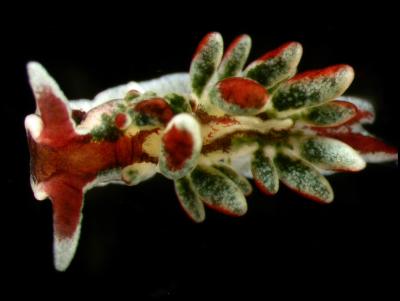
Click for big version
With
the opening of the Taputeranga Marine Reserve planned for
the 28 August and Conservation Week (7-14 September) just
around the corner – what better time to meet some of the
‘local’ species of the Wellington South Coast? Here are
some of the creatures you may spot while out snorkelling,
diving, taking photos, kayaking, building sandcastles,
picnicking on the beach or investigating rock pools in the
Taputeranga Marine Reserve.
Sea hares
Well camouflaged in their feeding ground of sea lettuce and red and green algae, the black sea hare, Aplysia brunnea, sprays a purple dye to ward off predators.
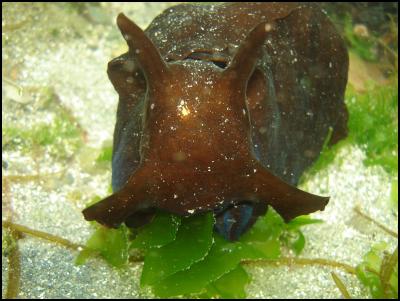
Click for big version
Sea horses
New Zealand’s only seahorse is the manaia, Hippocampus abdominalis. They are common close to the coast, below the low tide level. Seahorses are not good swimmers - they wait for a meal to swim by! Male seahorses give birth to up to 500 babies.
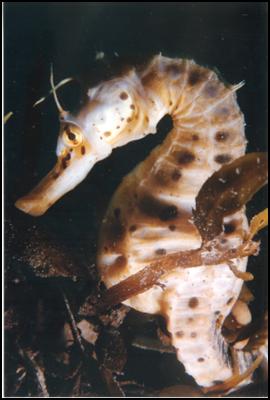
Click for big version
Giant kelp
This seaweed prefers colder waters and is often called bladder kelp because of the pods that keep it afloat, This brings the blades closer to the surface and the sunlight they need for photosynthesis. Giant kelp is one of the fastest growing seaweeds in the world – growing more than 30 cm a day and can grow to lengths of 30 metres.

Click for big version
Hagfish
This fish has no scales, no bones, no jaws and no eyes! The hagfish is sometimes called the blind eel and tends to live in dark places where eyes are less important for finding food. It has six barbells around the mouth which it uses to sniff out prey.
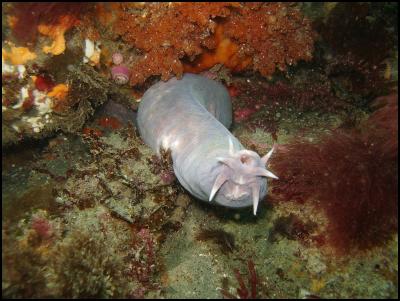
Click for big version
Anemones
Sometimes it is hard to tell if things in the sea are plants or animals. Many animals live attached to rocks and have evolved tactics to obtain their food from the water passing by. Some, like anemones, have developed special stinging cells to actively acquire their prey.

Click for big version
Sponges
Sponges are animals that obtain their food by sieving the water. There are almost 700 species of sponge in New Zealand and come in a dazzling array of colours, shapes and sizes.

Click for big version
Nudibranchs
Nudibranchs are sea slugs which come in such a vast array of colours they are real treats to spot while diving. A new species was discovered during the 2007 Marine Bioblitz on the south coast. Possibly taking on the colour of the seaweed on which it feeds, it was temporarily named the ‘Christmas nudibranch’ due to its red, white and green colouration.
Sand flounder
Widespread in muddy and
sandy sea floors, this fish is well camouflaged by its flat
shape and colour (which it can change in seconds). As larvae
they swim upright and their eyes are on either side of their
head, but as they get older the left eye ends up on the
right side of the head and they flatten.
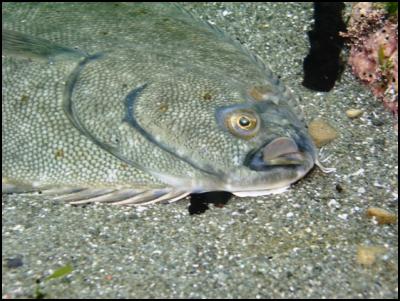
Click for big version
You can find out more about the species that inhabit the south coast and the Taputeranga Marine Reserve during Conservation Week on Sunday 7 September. People involved with the reserve will be giving 15 minute talks at points along the coast between Island Bay and the Owhiro Bay visitor centre between 11.30 am and 3 pm.
For more information about Conservation Week events, the Taputeranga Marine Reserve, or the species that inhabit our coastal waters, check out the DOC website or contact the Wellington Visitor Centre on 04 384 7770 or email wellingtonvc@doc.govt.nz.
ENDS


 FSCL: Woman Scammed Out Of $25,000 After Job Offer On LinkedIn
FSCL: Woman Scammed Out Of $25,000 After Job Offer On LinkedIn NIWA: Cheers To Crustaceans - New Species Named After Welly Brewery
NIWA: Cheers To Crustaceans - New Species Named After Welly Brewery MBIE: Trans-Tasman Earth Observation Research Studies Confirmed
MBIE: Trans-Tasman Earth Observation Research Studies Confirmed NZ Association of Scientists: Royal Society Te Apārangi Governance Submissions Close - NZAS Submission
NZ Association of Scientists: Royal Society Te Apārangi Governance Submissions Close - NZAS Submission HortPlus: Project Aims To Improve Quality Of Weather Data In New Zealand
HortPlus: Project Aims To Improve Quality Of Weather Data In New Zealand Air New Zealand: Air New Zealand And Cathay Pacific Welcome New Zealand Ministerial Approval To Extend Partnership
Air New Zealand: Air New Zealand And Cathay Pacific Welcome New Zealand Ministerial Approval To Extend Partnership



